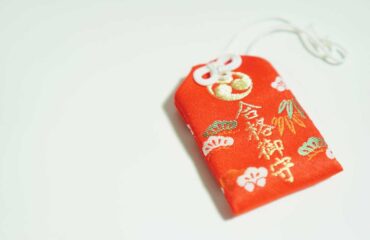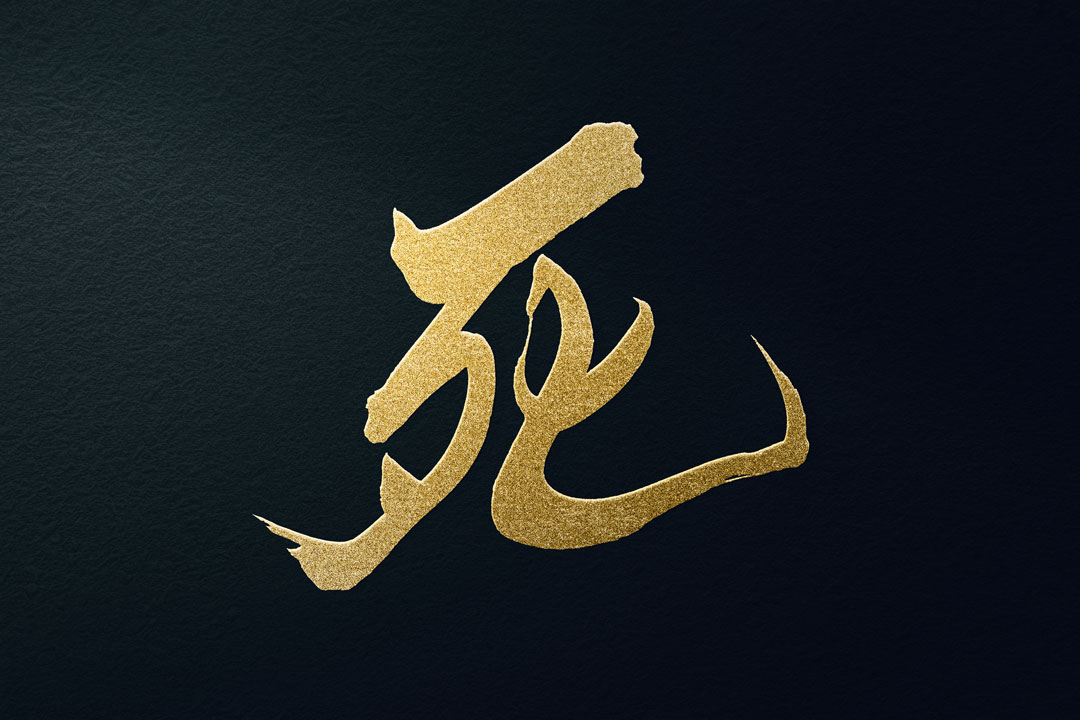
The Origin of Death in Kanji Symbol
The “death” part is a combination of a “夕” and a “ト” in the shape of a person’s remaining bones, and the right part is a “person 人” worshipping those bones, which is said to signify mourning for the dead.
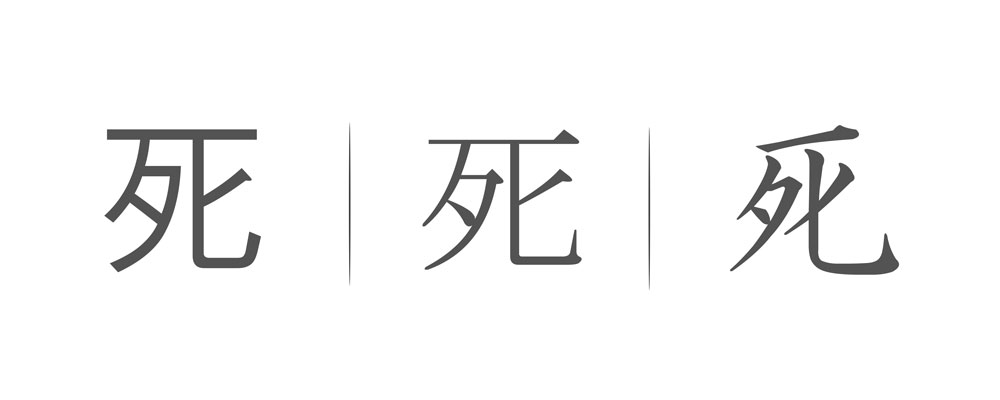
◆死
Hiragana Reading (Onyomi): Shi
Hiragana Reading (Kunyomi): Shi
In other words, the Kanji Symbol for “death” is an image of a person mourning the dead, thereby
This pictogram later evolved into the forms of small seal script and regular script, eventually becoming the modern character for “death” as we know it today.
Stroke order of the Kanji Symbol for Death
The first stroke of “death” should be written starting with the horizontal stroke.
The second stroke, “夕,” should be written with the left hand side of the stroke, and the right hand side of the stroke “ヒ
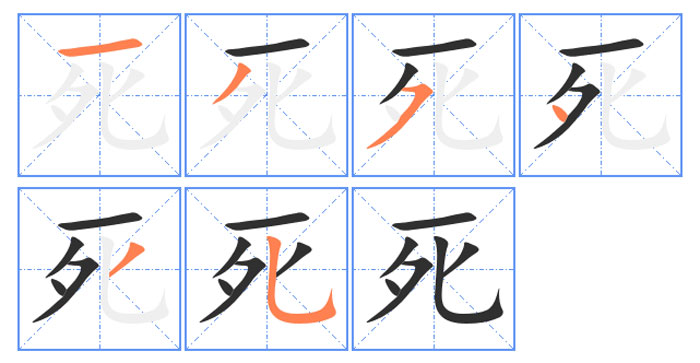
Death in Kanji written with a Japanese brush
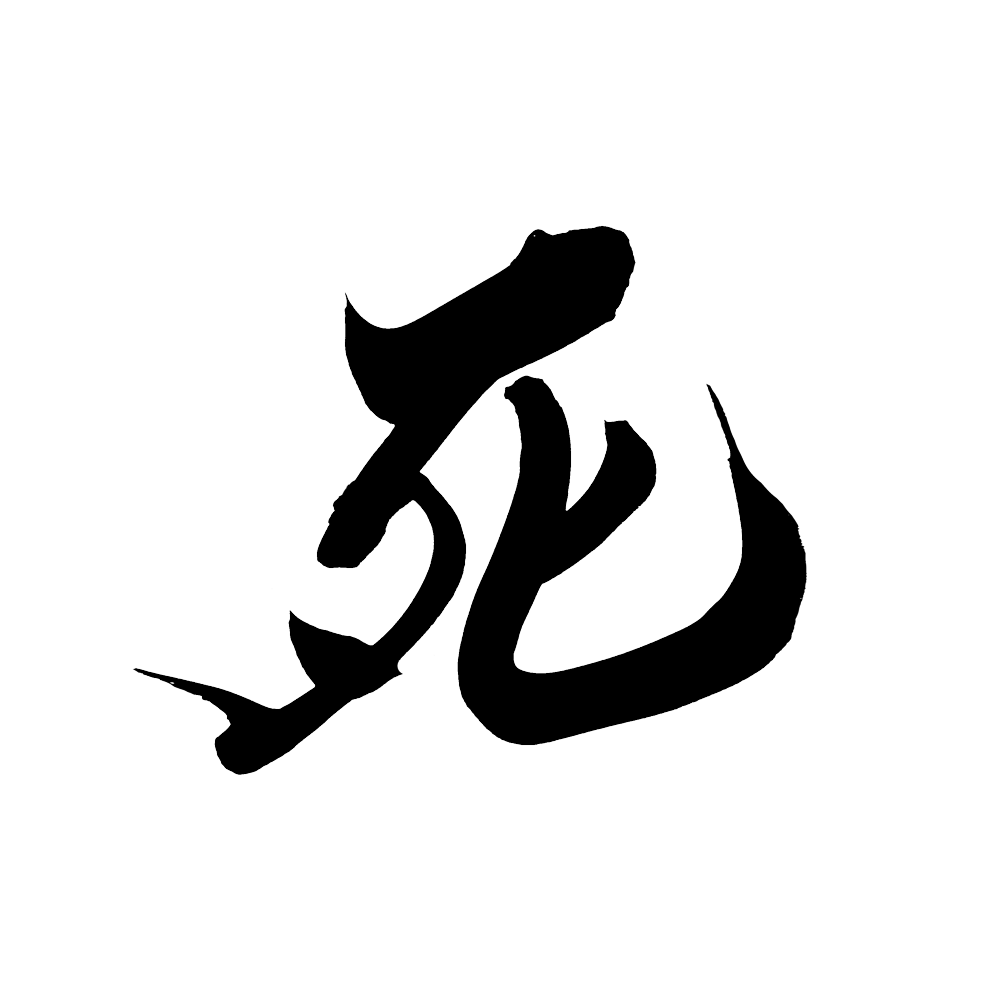

Kanji Compound Words Containing ‘死’ (Death)
◆死期【Shiki】
Hiragana Reading: しき
Meaning: The moment when a person’s life ends.
◆死者【Shisha】
Hiragana Reading: ししゃ
Meaning: A person who has died.
◆死体【Shitai】
Hiragana Reading: したい
Meaning: The dead body of a human or animal.
◆死闘【Shitou】
Hiragana Reading: しとう
Meaning: A fierce battle where one exhausts all their strength.
◆死別【Shibetsu】
Hiragana Reading: しべつ
Meaning: The experience of losing someone close and no longer being able to see them due to their death.
◆死霊【Shiryou】
Hiragana Reading: しりょう
Meaning: A spirit that brings harm or misfortune to people.
Four-Character Kanji Phrases Containing ‘死’ (Death)
◆死灰復然【Shikaifukunen】
Hiragana Reading: しかいふくねん
Meaning: The analogy of a once declined power or influence rebounding. Also, an analogy for something that had subsided but reoccurs.
◆死屍累累【Shishiruirui】
Hiragana Reading: ししるいるい
Meaning: Many corpses piled up in a gruesome manner.
◆死生有命【Shiseiyuumei】
Hiragana Reading: しせいゆうめい
Meaning: The idea that birth and death are determined by fate, and nothing can change it.
◆死中求活【Shichuukyuukatsu】
Hiragana Reading: しちゅうきゅうかつ
Meaning: Even in desperate situations, trying to find a solution or a way out.
Other Kanji Introduction
Conclution
Originating in ancient China and later embraced in Japan, the kanji “死” (death) has evolved through history, giving rise to various meanings and uses, and continues to impact modern society.
Through Buddhism, the samurai spirit, and literary works such as poetry and haiku, views on life and death have been formed and have deeply taken root in people’s hearts.
Furthermore, in digital media, the entertainment industry, and contemporary literature, the kanji “死” has created a wide range of expressions and has had a significant influence on our language and culture.
Learning the kanji “死” not only contributes to language learning, but also enhances cultural understanding and provides opportunities to confront human perspectives on life and death.
We hope that this blog will serve as a catalyst for deepening your understanding of the kanji “死.”
About Us
SANTEN Design is a company specializing in the production of brush lettering logos.
We specialize in the creation of flexible brush lettering logos to suit a variety of uses and requests.
We will be happy to provide you with quotations, consultations on various types of production,
and of course, detailed information on our achievements.
Please feel free to contact us for a quotation.


